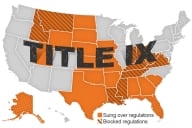You have /5 articles left.
Sign up for a free account or log in.

iStock
On Thursday, a major study was released by admissions experts who said their research shows that dropping requirements that applicants submit SAT or ACT scores can help colleges achieve key goals.
The study -- based on data from 28 colleges and universities -- found that institutions going test optional tended to see increases in applications, a more diverse pool of applicants and greater diversity in enrolled students. And perhaps most important, the study found that those who do not submit test scores graduate at the same or higher rates than do other students.
The College Board responded by noting that some of the gains reported by test-optional institutions were also seen at colleges that still require the SAT.
But what of individual colleges? Many that have gone test optional have been conducting their own studies of the impact -- on diversity and academic success alike.
Some studies are at colleges that have gone SAT-optional relatively recently, on how the first class admitted that way has done -- and these analyses tend to be limited. Other studies are of colleges that now have many years of experience with test optional. The three studies discussed here are all of universities, providing larger sample sizes of students than the liberal arts colleges that were generally the pioneers in test optional -- and that tend to have high admissions officer-to-applicant ratios.
Larger universities, some have feared, might find the test scores more useful. The data released by universities show that they are indeed tracking student success after adopting test-optional policies.
George Washington University recently examined student success for those admitted to start in the fall of 2016, the first class where students had the option of not submitting test scores. The results showed that students had roughly the same levels of academic success, regardless of whether scores were submitted, based on first-year grade point averages.
One of the first large universities to go test optional was Wake Forest University, which adopted the policy in 2008. With a decade of experience, it had much more information than does GW at this point.
Wake Forest supplied this summary data on its experience:
- About 30 percent of students don't submit scores.
- Since the university went test optional, undergraduate applications have increased from 9,050 in 2008 to 14,006 last year.
- Underrepresented minority applicants are more likely than others to opt not to submit scores.
- Diversity has gone up in the years of test-optional admissions. The last class admitted with tests required had 18 percent of its students from underrepresented minority groups. By last year, that figure was up to 29 percent.
- No differences have been found in academic performance (grades) of students on the basis of whether they submitted scores.
- In the last class for which data are available, the graduation rate -- 87 percent -- was identical for those who submitted scores and those who did not.
- In the last class for which data are available, freshman retention (returning for second year) was marginally higher for those who did not submit scores than for those who did (94 percent versus 93 percent).
Test Optional at a STEM University
Another institution that has studied the impact of test optional is Worcester Polytechnic Institute, which attracted attention for its shift in admissions policy because WPI is an engineering and science institution. Conventional wisdom has held that standardized testing is most needed for those seeking a STEM education. As at similar institutions, WPI has been pushing not only on ethic and racial diversity, but also to attract greater numbers of female students.
The data WPI has collected point to success with the policy, but also to the need for adjustments. Here are some of the data from the university:
- Applications from underrepresented minority groups are up 146 percent, and enrollments are up 156 percent.
- Applications from women increased by 99 percent and enrollments increased by 81 percent. The incoming Class of 2021 was 43 percent women, the highest level ever at WPI. (The university attributes the gains to multiple strategies, of which test optional was one.)
- Students enrolling without test scores are not only matching others in academic performance, but are graduating with honors in significant numbers.
WPI officials said that their biggest disappointment after launching test optional was that relatively few applicants (about 3 or 4 percent a year) used it. The original WPI plan was called "Flex Path" and required students opting not to submit test scores to instead provide a project or sample of academic work. Potential applicants indicated that this was viewed as an additional hurdle.
So last year, WPI eliminated the additional requirements for those applying without test scores.
Applicants responded to the new option. In 2017, 3 percent of applicants didn't submit test scores. In 2018, the first year in which applicants could skip test scores without submitting something else, 11 percent applied that way.
The share was significantly higher for applicants who were women (33 percent), members of underrepresented minority groups (25 percent), and first generation college goers (20 percent).
All evidence on those not submitting scores at WPI (largely before the most recent change) suggests no difference in academic performance and completion.








